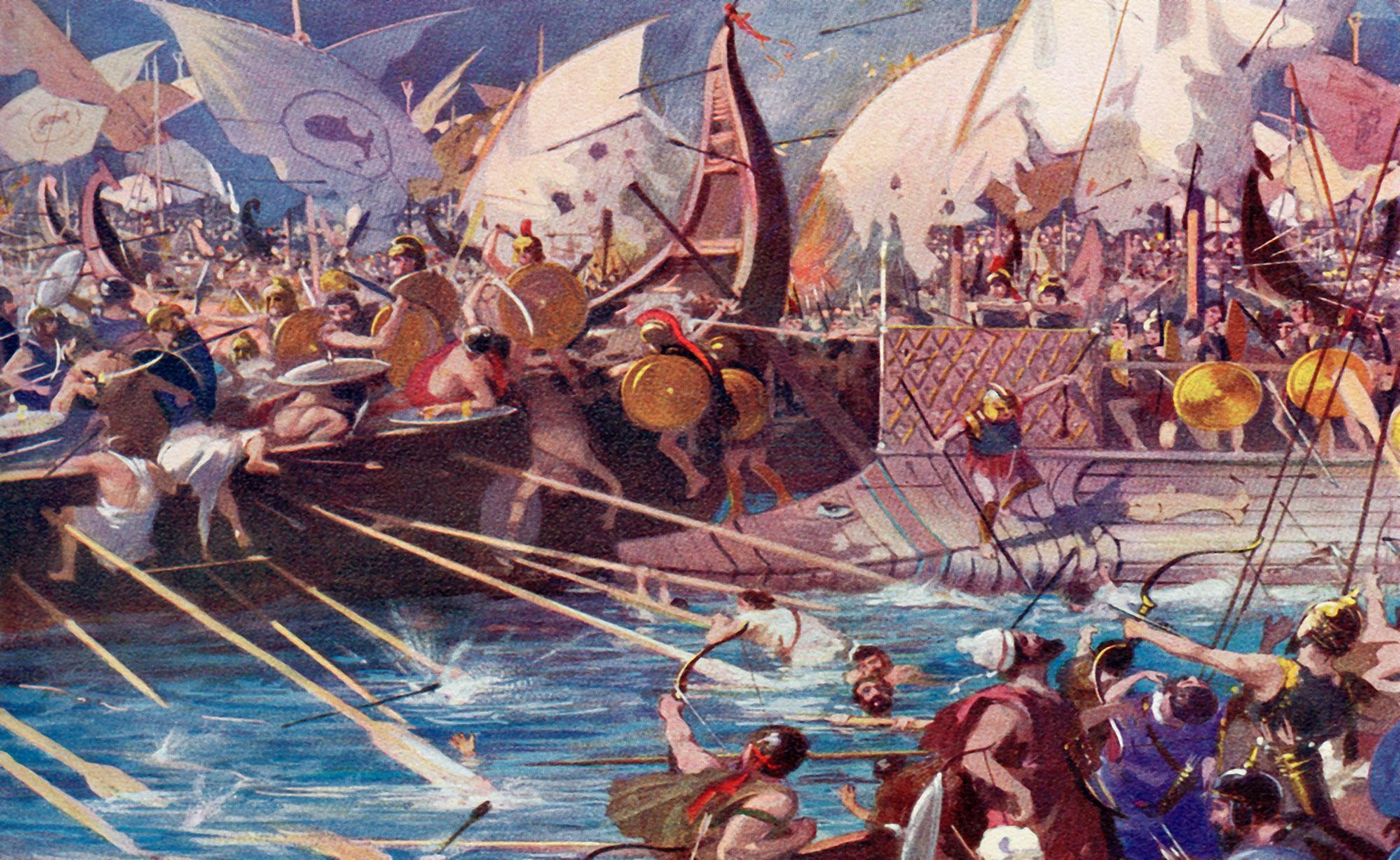This year marks the 2500-year anniversary of the famed Battle of Salamis between the Greek city-states and the Persian Achaemenid Empire. This clash of civilizations is considered by many to be one of the most important battles in history. The Greek victory ensured the key influence that Greek civilization would have in the western world.
Maximilian Gruber, 22 December 2021
At the end of September 480 BC, a major naval battle took place in the Saronic Gulf between the Persian Empire and an alliance of Greek poleis (city-states). Known as the Battle of Salamis, it marked a turning point in the Greco-Persian wars that ravaged the Eastern Mediterranean for nearly twenty years. For many historians the Battle of Salamis to this day is considered one of the most significant battles in history, a turning point and landmark event in the history of European civilization. Had the Persians achieved victory at Salamis, western civilization would likely not have been so strongly influenced by Greek philosophy, science and culture. Only after the Persian wars were won did Greek civilization blossom, including our modern concept of democracy and personal freedom. Had Persia won, the world we live in might have looked very different.
While the anniversary of a battle is no cause for celebration, from the perspective of an historian, it provides a moment for reflection. Understanding the battle’s genesis, context and consequences are crucial for providing answers as to why this clash of civilizations 2500 years ago is still relevant today and makes the standoff between East and West a contemporary issue.
Clash of East v. West
The confrontation between the Greek world and the Persian Empire from 500 to 479 BC should be seen in the broader context of the overlap and clash of political spheres of influence that existed at that time. Fifty years before conflicts with the Greek-speaking world erupt, the Achaemenid or First Persian Empire had extended its rule far beyond the Iranian Plateau. Mesopotamia and the Levant had many powerful and influential empires, kingdoms and city states that were eventually subjugated to Persian rule. Egypt was entirely annexed. Thrace and Macedonia, two regions on the edge of the Greek world, were added to the Persian sphere of influence. During this process of expansion, the majority of Greek poleis in western Asia Minor, now the Turkish Aegean coast, resisted aligning with the Persian Empire under Cyrus II. As a result, their economic and political influence in the region dwindled. This provoked the aforementioned city-states to rise up against Persia in the ‘Ionian Revolt‘ (499-493 BC). After some initial success of the insurgent poleis, the Achaemenid Empire was victorious in the decisive Battle of Lade and in the conflict as a whole. While providing only limited military support, the most import ally of the rebellious city-states was Athens, which unsurprisingly became a main focus of Persian foreign policy.
Ancient Power Projection
Athens depended strongly on its maritime power projection in the Aegean to ensure its political influence in the entire „Greek world“. The Persian Empire‘s rule and influence over the Greek poleis of coastal Asia Minor was unacceptable to Athens. This would have limited its capability to exploit the maritime potential of the region. The „Ionian Revolt“ was therefore the last opportunity for Athens to act preemptively and preventively before Persian influence and power had become overwhelming. For Persia, victory over Athens would quell all future insurrections in western Asia Minor, as well as secure the Persian western flank altogether by expanding into Europe.
Although the insurrection ended with the integration of the rebel poleis into the Achaemenid sphere of influence, Darius of Persia was determined to punish those who had supported the rebellion. An expeditionary force was sent to the Greek motherland two years later to replace the leader of Athens with somebody loyal to the Achaemenids. Persian forces landed in the Bay of Marathon and were eventually beaten by Athenian forces and its allies in the famed battle of Marathon.
After the defeat at Marathon, Darius’ determination to subdue the Greek motherland was larger than ever. It was, however, his son Xerxes who would finally undertake a major military expedition to mainland Greece to secure his empire’s western flank and eliminate the Greek trouble spot for good.
Over the Hellespont
In 480 BC, a Persian invasion force of around 75 000 soldiers was sent across the Hellespont and was temporarily blocked by a united Greek army lead by Leonidas of Sparta in the now legendary Battle of Thermopylae. The Persian army was successful and even occupied Attica including the city of Athens. The Athenians withdrew their fleet to the south, followed by the Persian army and fleet. Meanwhile, as the Greek army was gathering at the Isthmus of Corinth to prevent the Persian invasion force from entering the Peloponnese, Athens was assembling a huge fleet in the bay of Salamis to entrap the Persian fleet by taking advantage of the island’s natural harbor. The Greeks were victorious at Salamis. Xerxes retreated to Asia Minor and did not witness the defeat of his land army in the Battle of Plataea one year later.
These victories ensured the independence of the poleis of mainland Greece, which was followed by internal fights among themselves over the next 150 years. These fights were put to an end by Alexander the Great of Macedonia. After uniting the Greek poleis under his coat of arms, he turned against the Achaemenids and eventually conquered their empire. Persia remained under Hellenistic rule until the Parthian era (247 BC – 224 AD) when it became a major opponent of the expanding Roman Empire in the eastern Mediterranean, the Levante and Mesopotamia.
Power Projection Today
Today, these battles between Greeks and Persians have taken on a mythical quality. The outnumbered Greeks pushed back the invading Persians. The Battle of Salamis is often used to portray the ancient animosity between the East and West. Its lessons are still very relevant today not only in international relations but also in politics and military alliance-building.
The fact that the Greek navy is now headquartered in Salamis is an obvious continuation of the symbolism and meaning of this ancient battle. Bearing in mind the conflict on Cyprus, the choice of location of the Greek headquarters is more than just symbolic: it is intended to send a message.
The Eastern Mediterranean is as important today as it was 2500 years ago and is the scene of serious conflicts and clashes of civilizations. The history of the region has provided inter alia the democratic roots for European and other civilizations, and for this a great debt is owed to those who fought and won the ancient battles determining the fate of nations.





